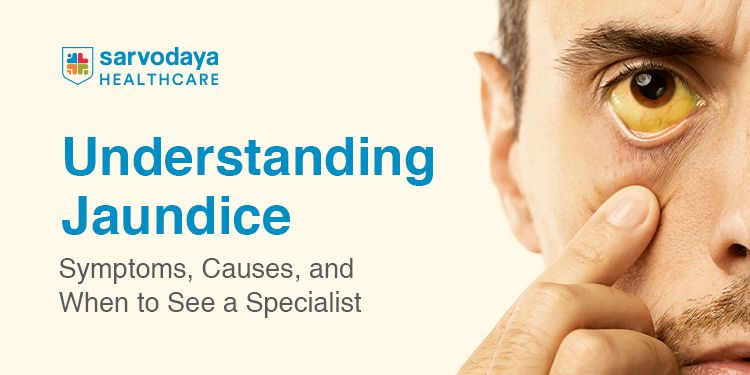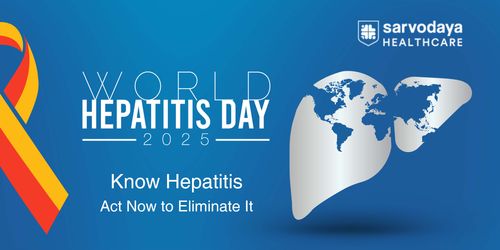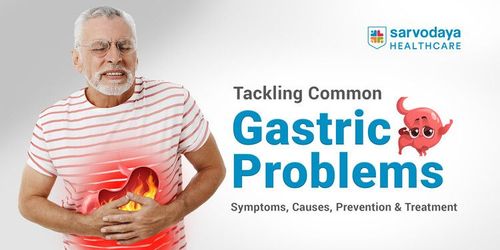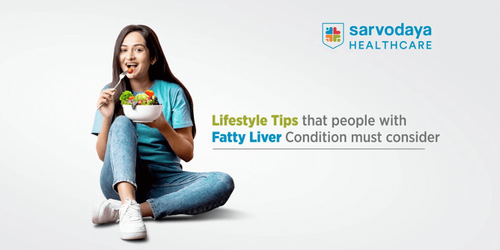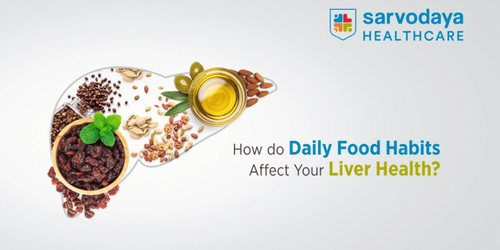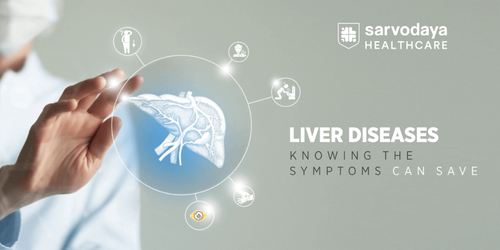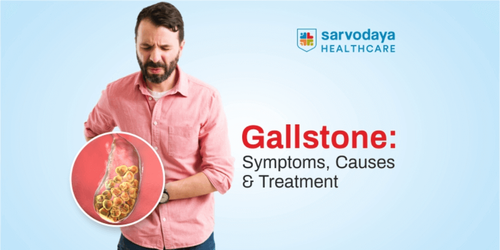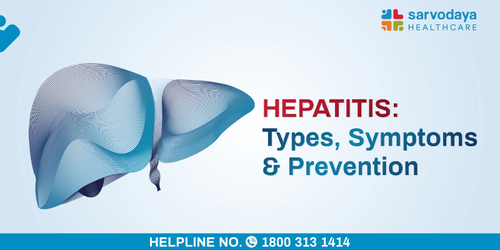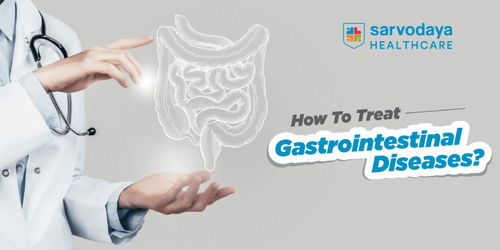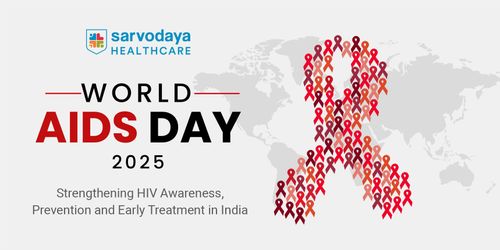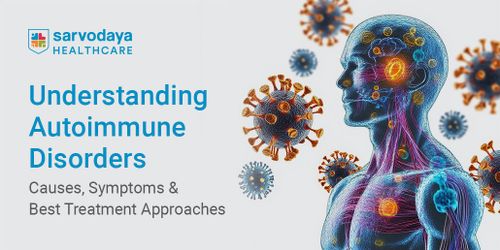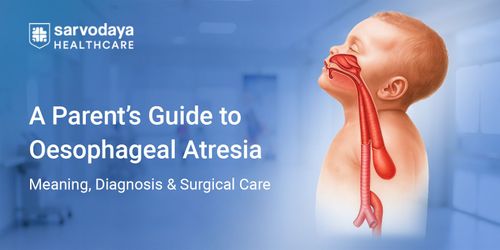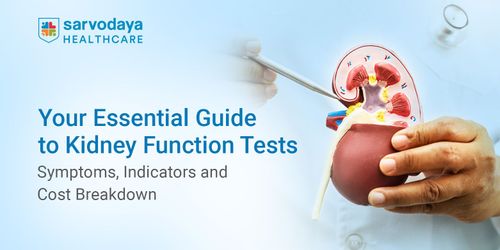Jaundice is a common yet often misunderstood medical condition that can affect people of all ages, from newborns to adults. Recognisable by the yellowing of the skin and eyes, jaundice is not a disease but a symptom of underlying health issues, most commonly related to liver function. Whether it's a mild case or a sign of something more serious, understanding this condition empowers individuals to take informed steps toward better health.
This blog explores the key symptoms of jaundice and its underlying causes. It also explores when it's time to consult the best gastroenterologist in Delhi NCR for expert care and treatment.
What is Jaundice?
Jaundice is caused when there is an excess of bilirubin in the bloodstream. Bilirubin is a yellow pigment formed during the breakdown of red blood cells. The yellow discolouration in Jaundice is due to the liver being unable to process and excrete this pigment efficiently, due to which it accumulates in the body and turns the skin, eyes and mucous membranes yellow.
There are three primary types of jaundice:
- Pre-hepatic jaundice: Caused by excessive breakdown of red blood cells before the bilirubin reaches the liver.
- Hepatic jaundice: Occurs due to liver-related conditions such as hepatitis or Liver cirrhosis that impair bilirubin processing.
- Post-hepatic jaundice: Results from blockages in the bile ducts, often due to gallstones or tumours, which prevent bilirubin from being excreted properly.
Although jaundice is more commonly associated with newborns, adults can develop it due to various health conditions. Individuals with liver disease, bile duct disorders, or hemolytic anaemia are at a higher risk.
Common Symptoms of Jaundice
Identifying symptoms of jaundice early is critical for prompt medical attention and treatment.
While the yellowing of the skin and eyes is the most recognisable sign, several other symptoms that may indicate jaundice:
- Dark-colored urine
- Pale or clay-colored stools
- Fatigue or weakness
- Loss of appetite
- Unexplained weight loss
- Itchiness or skin irritation
- Abdominal pain, especially felt in the upper right part of the stomach
- Nausea and vomiting
In some cases, jaundice may be mild and go unnoticed, especially when there’s no accompanying pain or discomfort. However, any persistent yellowing of the skin or changes in urine and stool colour should prompt immediate consultation.
Special attention must be given to symptoms of jaundice during pregnancy, which can signal serious underlying issues such as intrahepatic cholestasis of pregnancy or HELLP syndrome.
Common symptoms in pregnant women include:
- Intense itching, particularly on hands and feet
- Yellowing of skin and eyes
- Swelling in legs and feet
- Nausea and upper abdominal pain
- Elevated liver enzyme levels
Major Causes of Jaundice
Understanding the causes of jaundice disease can help patients and caregivers take preventive measures and recognise when medical attention is needed. Jaundice is usually a result of an underlying condition that affects the production, processing, or excretion of bilirubin.
The commonly found causes of jaundice disease are:
- Liver infections (Hepatitis A, B, C): Due to these viral infections, the liver is inflamed, and its ability to process bilirubin is impaired.
- Cirrhosis: Chronic liver damage from alcohol use, hepatitis, or fatty liver disease can cause scarring and reduce liver function.
- Gallstones: These can block the bile ducts, preventing bilirubin from exiting the body.
- Hemolytic anaemia: A condition where red blood cells break down faster than they can be replaced, leading to excess bilirubin.
- Alcohol-related liver disease: Long-term alcohol consumption damages liver cells, disrupting normal bilirubin metabolism.
- Pancreatic or liver tumours: These can compress the bile ducts or interfere with liver function.
- Genetic disorders: Conditions like Gilbert’s syndrome may cause elevated bilirubin levels with minimal symptoms.
In many cases, jaundice may be the first visible sign of these underlying disorders. Hence, recognising the symptoms and causes of jaundice can lead to early intervention and better outcomes.
Diagnosing and Treating Jaundice
Diagnosing jaundice involves identifying the root cause of elevated bilirubin levels. A thorough medical history and physical examination are usually followed by a set of laboratory and imaging tests. These may include:
- Liver function tests (LFTs): To assess the liver's health and capacity to process bilirubin
- Complete blood count (CBC): To detect infections or anaemia
- Ultrasound or CT scan: To visualise the liver, gallbladder, and bile ducts
- Bilirubin tests: To measure the amount of bilirubin in the blood
- Hepatitis panel: To check for viral infections
In pregnant women, treatment becomes more nuanced. Doctors monitor both maternal and fetal health closely and may adjust medications or recommend early delivery if necessary. Early diagnosis and management are especially important when dealing with symptoms of jaundice during pregnancy, as delays can lead to complications for both mother and baby.
When to Consult a Specialist
While mild jaundice may resolve on its own, several red flags that require immediate medical attention:
- Persistent yellowing of the skin and eyes
- Severe abdominal pain or swelling
- High fever
- Dark urine and pale stools lasting more than a few days.
- Intense itching or skin rashes
- Chronic fatigue and unexplained weight loss
If you or a loved one experiences any of these symptoms, don’t delay seeking expert advice. Early consultation can prevent serious complications, especially when jaundice is a sign of an underlying liver or bile duct disorder.
In such scenarios, getting in touch with the best gastro doctor in Faridabad is crucial. These specialists have access to the latest technology and are trained to interpret complex symptoms effectively. They can identify the symptoms and causes of jaundice accurately and recommend a course of treatment that best suits the patient’s needs.
Patients across the region can also benefit from visiting the best gastroenterology hospital in Faridabad, Delhi NCR, where multidisciplinary teams work together to provide holistic and evidence-based care for liver and gastrointestinal conditions.
Conclusion
By understanding the key symptoms and causes of jaundice, individuals can take timely action, avoid complications, and restore their health. Whether it presents mildly or with severe symptoms, jaundice should never be ignored, especially in pregnant women. Recognising the symptoms of jaundice during pregnancy is essential for ensuring both maternal and fetal well-being.
At Sarvodaya Hospital, Faridabad, patients receive world-class gastroenterology care guided by experienced specialists and supported by state-of-the-art diagnostic facilities. As a leading healthcare institution, Sarvodaya is widely regarded as the best gastroenterology hospital in Faridabad, Delhi NCR, offering comprehensive treatment for all forms of jaundice and liver-related conditions. If you are experiencing any symptoms of jaundice or simply want to ensure your liver is functioning optimally, a preventive consultation with the best gastroenterologist in Faridabad can help detect issues early and promote long-term wellness.
Delaying treatment can allow a minor concern to turn into a major health challenge. So, if you or someone you know is showing any warning signs, don’t hesitate to consult the best gastro doctor in Faridabad. With expert care, timely diagnosis, and patient-focused treatment, recovery is not only possible - it’s probable.


